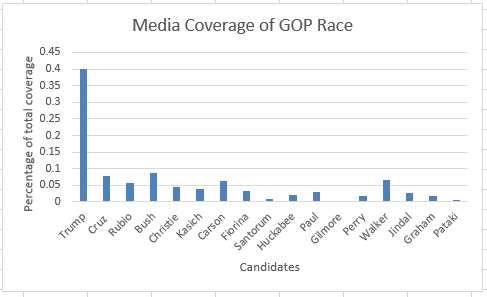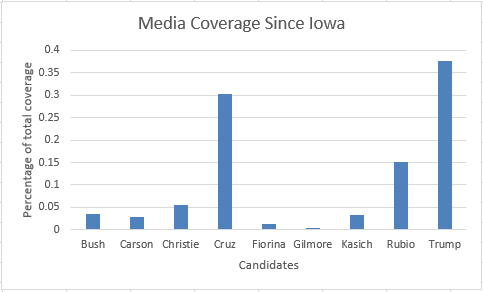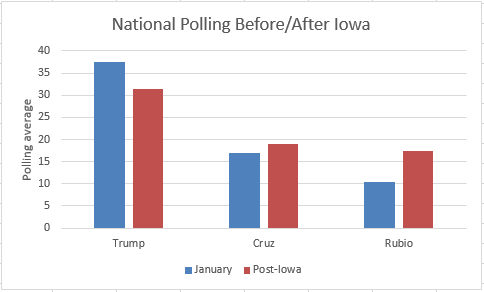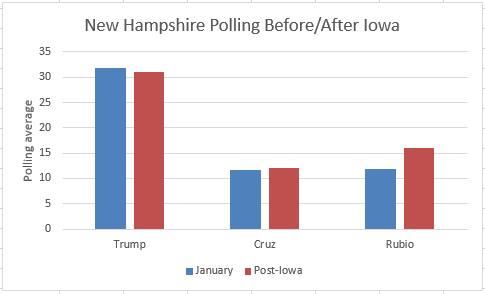With Hillary Clinton capitalizing on her strongest advantages to rout Bernie Sanders in the South Carolina primary on Saturday night, the divides in demographic support for the two candidates have become further accentuated. Consistent with her strengths at the national level and in previous primaries and caucuses, the groups that carried Clinton to a decisive victory were African Americans and older voters.
The turnaround from the Palmetto State is quick, as the race now stands days removed from its first truly pivotal juncture: Super Tuesday, when 11 different states–as well as American Samoa, which somehow offers nearly half as many delegates as New Hampshire–will hold primaries or caucuses. 1,017 delegates will be up for grabs, all of which allocated proportionally–meaning “running up the scoreboard” or making a dent in a larger lead are just as important. By the end of Tuesday’s elections, 25.20 percent of pledged delegates will have been allocated; any sizable disparity that results afterwards will be difficult to overcome. With so much of this Democratic primary race already defined by varying characteristics in population, a closer look at the key demographics in the upcoming states is in order.
Using Morning Consult demographic data for the nationwide Democratic primary race polling, I identified three key demographic divides that define the support for either Clinton or Sanders: race, age, and ideology. In order to see how these traits may come into play next Tuesday, I looked at the demographic composition of each of the Super Tuesday state electorates based on exit poll data from the 2008 primaries. In order to match this data with current polling, the three key characteristics are black or white race, 18-29 age or 65+, and liberal/moderate/conservative ideology. While the 2008 demographics won’t identically parallel the ones that exist today (for example, the Democratic party is likely more liberal than before), it should nevertheless give a good picture of the electorates in these crucial future states–especially in light of so little polling in many of them.

The most important takeaway from the table is the differential between each of these state’s demographic group percentages and the national average for these (the differences appear in color in the table, in the rows in which “Diff” follows a state abbreviation). Sky blue corresponds to an advantage for Sanders–a whiter/less black, younger, and more liberal electorate–and orange points to strong suits for Clinton–blacker, older, and more moderate/conservative voters (different shading more or less approximates degree of these strengths).
The extent of the strong points seen above for the candidates should all the while be mediated by the amount of delegates they gain from each state, which is included in the second-to-last column from the right. The final rightmost column depicts the current polling state of the race. Priority for the numbers here is granted in this order: HuffPost Pollster calculations that gives greater weight to more recent polls, Real Clear Politics averages or single polls, and FiveThirtyEight estimates/projections for level of support (specifically for the two caucus states in Colorado and Minnesota that contained the lowest amount of polling).
Restricting to the nine states with exit poll data from 2008, four could represent potentially strong ones for Sanders in terms of having a whiter/less black electorate than the national average. The first of these in Arkansas, however, trends away from liberalism and likely has an older electorate, thus partly explaining Clinton’s current strong standing there (the larger factor is of course her ties to the state). Massachusetts, Oklahoma, and Vermont are the friendliest to Sanders in terms of racial composition, as are Minnesota and Colorado: although no reliable polling data exists for these two caucus states, their general population (but not electorate) demographics–whiter and less black than the national average–offers at least some indicator that they would favor Sanders.
These states are crucial for Sanders, but even if he wins them, Super Tuesday results will likely not prove promising. The five other states reside in the south where Sanders will struggle most–where the electorate trends blacker and less liberal–and consequently where he faces polling deficits of 20 percentage points or more. Virginia, Tennessee, and perhaps Georgia might give Sanders his best chance to salvage some delegates. Nevertheless, his post-Super Tuesday path looks bleak; if he wants to change that outlook, between now and Tuesday is the most critical time for some race-altering event to occur.






